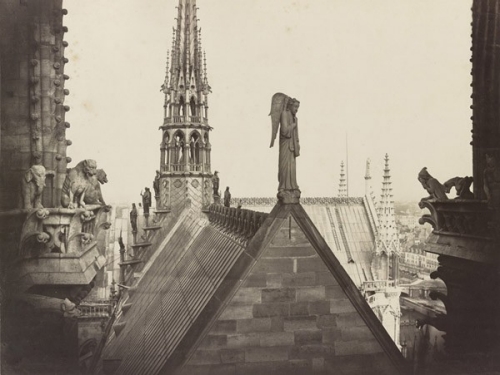The years 1855 to 1862 witnessed both pictorial innovation in Marville’s work and expansion of the photographer’s professional activities. Starting around 1855, he began making photographs using the recently introduced collodion negative process. This entailed coating a glass plate with a solution of salted collodion (a viscous liquid made from dissolving gun cotton in ether and alcohol), placing it in a silver nitrate bath, and then exposing it in the camera while still wet. With its relatively short exposure time, the new process yielded a more detailed, sharper image than the paper negative process that Marville had been using, enabling him to produce landscapes and architectural studies of dazzling clarity. Although the on-the-spot preparation was cumbersome, the faster exposure allowed Marville to capture fleeting effects in nature, such as cloud-streaked skies.
Marville also began to employ larger negatives, especially when photographing architecture. He cultivated an important network of patrons, including the director of the Musée du Louvre, and numerous architects, among them Eugène Viollet-le-Duc, who hired Marville to document major restoration projects. By 1862, he had assumed the title “Photographer of the City of Paris”—a description that attests to his newly acquired official stature as well as to the increasing importance photography played in the documentation of the rapidly changing city.
